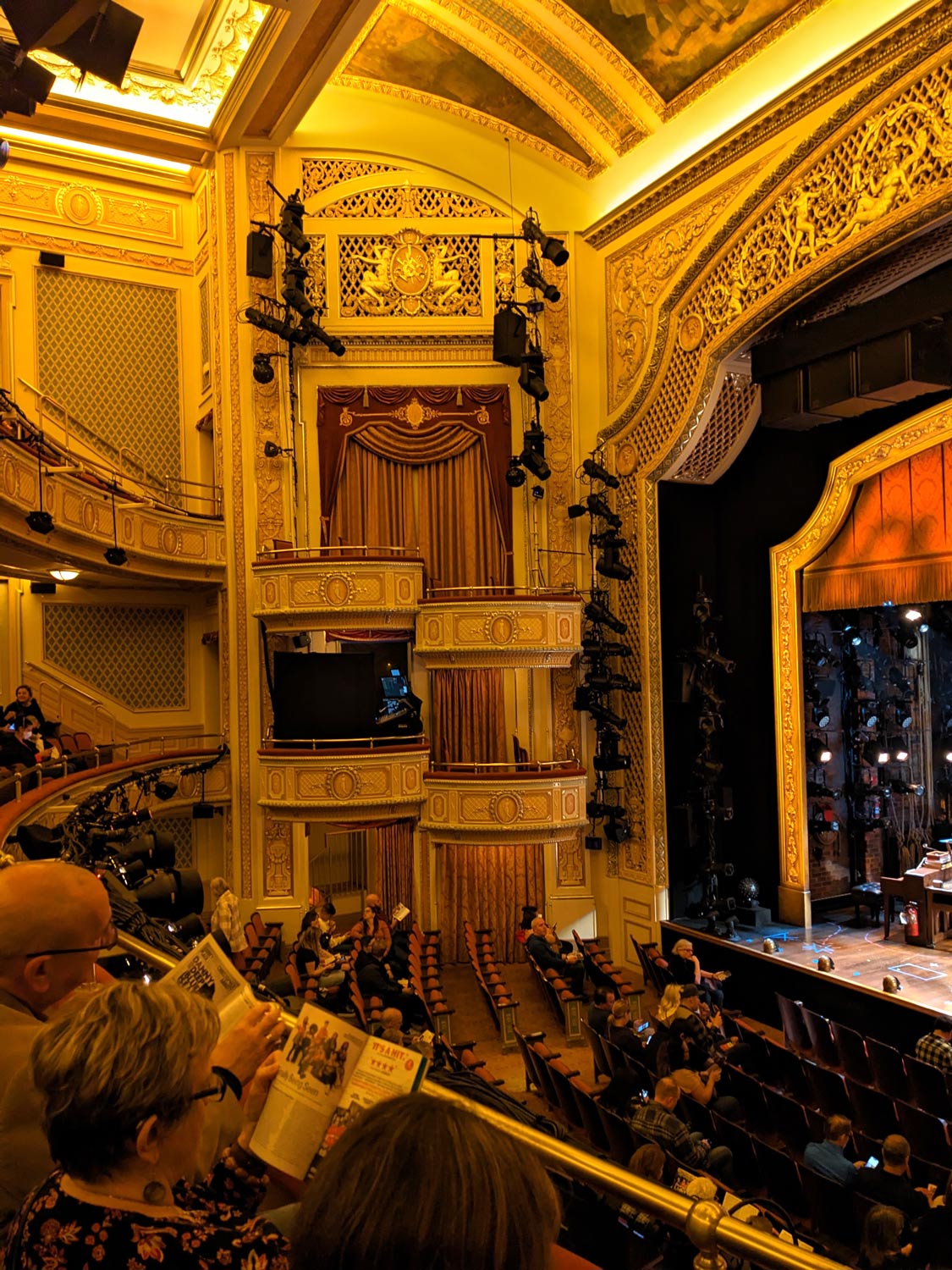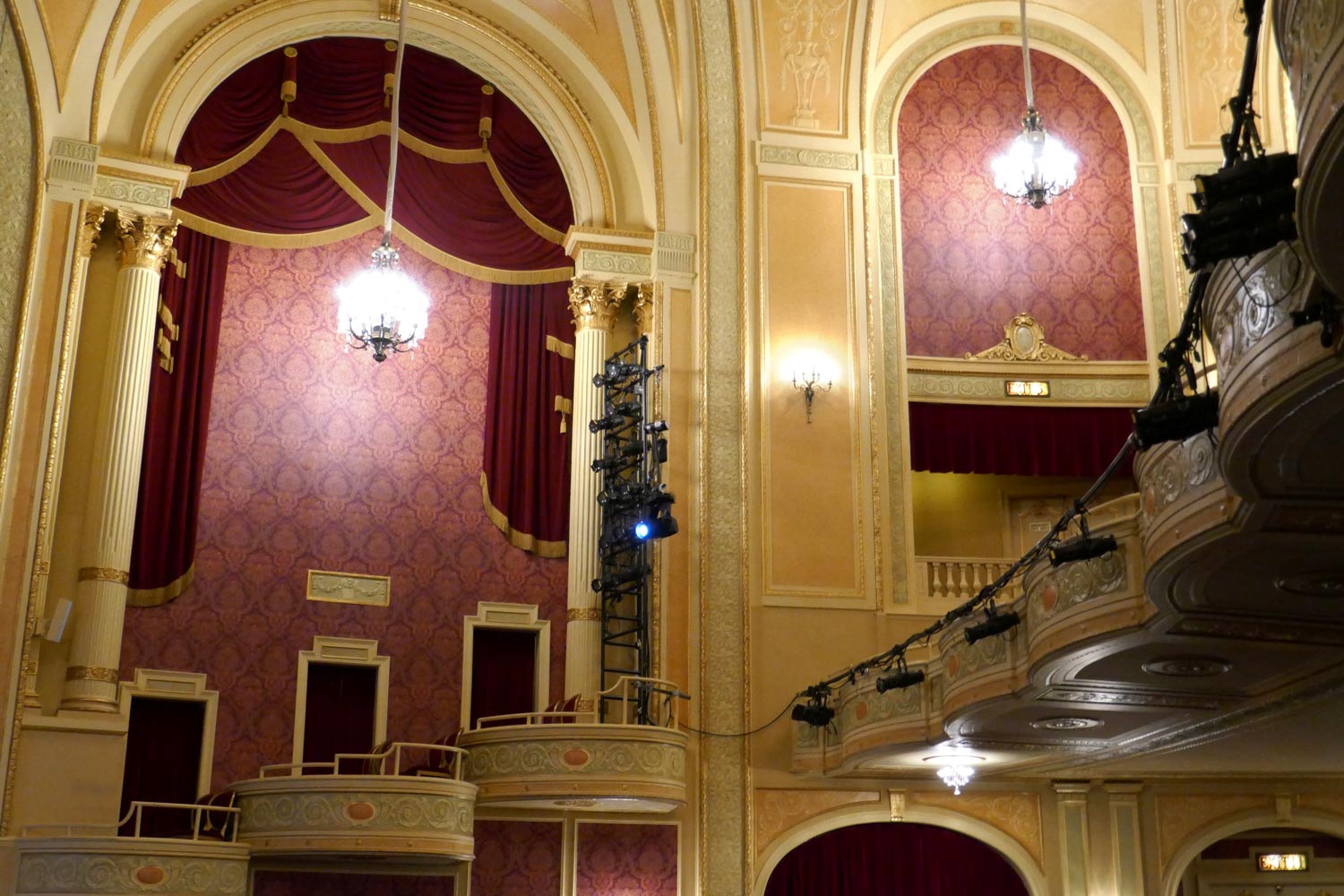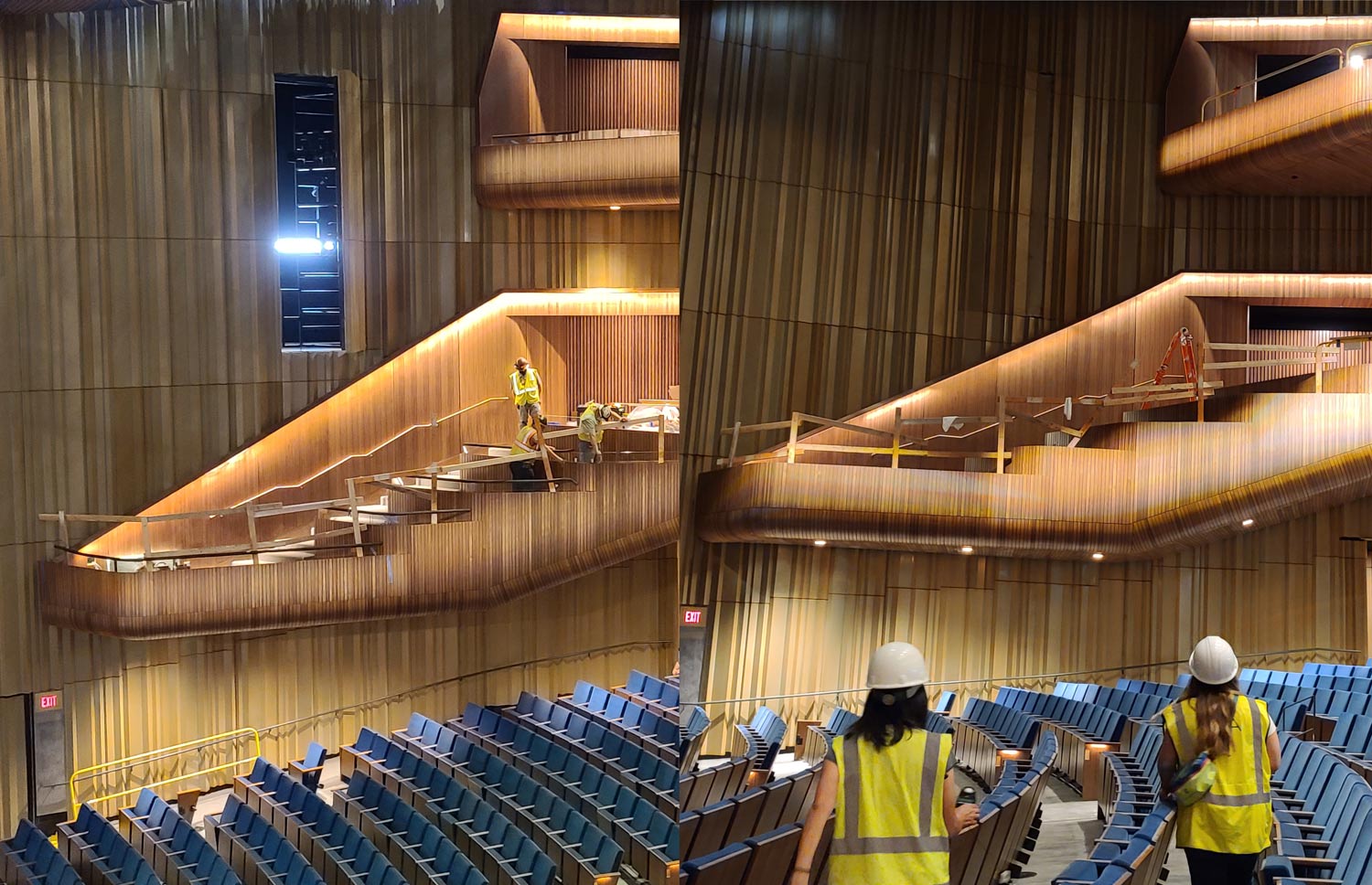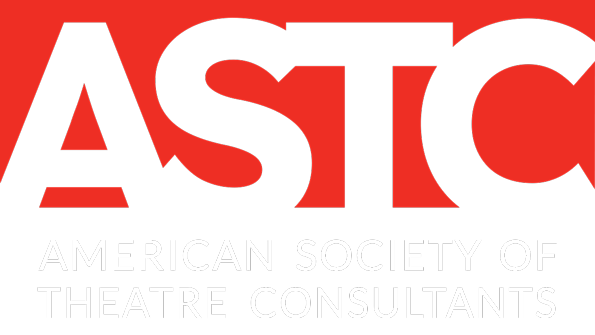Did You Know – What is a Box Boom?

Lighting fixtures are temporarily mounted with side arms to permanent vertical pipes along the proscenium arch and box seats of a Broadway theatre house. (Photo by Author)
As theatre consultants, we have all been in a meeting where somebody erroneously refers to a “box boom” as the “boom box.” It gets a laugh, there’s the obligatory Say Anything… reference, and the discussion continues. This confusion, and resulting inversion of words, can be cleared up with a basic understanding of what a “boom” is and why it’s in a “box.”
Booms are vertical pipes used predominantly as side lighting positions. Side lighting angles are an important tool for lighting designers to highlight the shape of performers’ bodies, particularly in dance. If booms are being used on stage, the pipes are attached to heavy portable bases and sometimes secured to rigging above to prevent the boom from tipping over. Light ladders — a series of horizontal pipes connected to a vertical frame — can also be suspended from rigging over the stage to keep the floor clear for performers.
For action that takes place downstage of the proscenium arch, side lighting must be positioned to allow performers access to the apron and to not block the audience’s view of the stage. In older theatres, tiers of box seats wrapped the sides of the audience chamber with the most prominent boxes at the side of the stage reserved for the most important patrons. W. Oren Parker, in various editions of his textbook Scene Design and Stage Lighting, credits Broadway and its designers with the innovation of repurposing the highest box seats for in-house boom positions. Hence: “box booms.” If you attend a performance in a Broadway theatre today, you are likely to see semi-permanent lighting positions erected in the box seats.

A permanent ladder-style lighting position in an historic theatre. Horizontal pipes make hanging lights easier and safer because technicians do not have to hold or balance the weight of the fixture while securing it. (Photo by Paul Sanow, ASTC)
In new construction, however, side lighting positions are planned more deliberately. Single, vertical pipes mounted to the side walls of the audience chamber can be cost effective, but they present operational challenges. If safe access is not provided to side lighting positions from a technical gallery, technicians must set up extension ladders or personnel lifts that often rest on the sloped audience floor. They must then ascend with a fixture in one hand and struggle to hold the light in place. Vertical pipes do not support the weight of the fixture until the c-clamp is tightened to the pipe. For this reason, side lighting structures with horizontal members are preferred, especially in educational venues. These can be in the form of a flat ladder-style structure protruding from the wall or tower-style structure built on an elevated gallery. When these structures are over the apron, close to the proscenium wall, they are often called “ante-pro” (before or in front of the proscenium) positions. When they are farther downstage toward the audience, even if they are not located in a box seat, the name “box boom” seems to have stuck.

Rotating lighting positions designed into the walls above the side boxes in a new theatre. A decorative panel conceals the position when not in use and masks the fixtures when the position is deployed. The structure also has integrated ladder rungs for technicians to safely climb and focus lights. (Photos by Alec Stoll, ASTC)
With the help of a theatre consultant, lighting positions on stage and in the audience chamber can be designed with safe access and integrated into the architecture.
By Robert Jenista
Disclaimer: Any views or opinions expressed in this article are solely those of the author and do not necessarily represent those of the American Society of Theatre Consultants. This article is for general information only and should not be substituted for specific advice from a Theatre Consultant, Code Consultant, or Design Professional, and may not be suitable for all situations nor in all locations.


